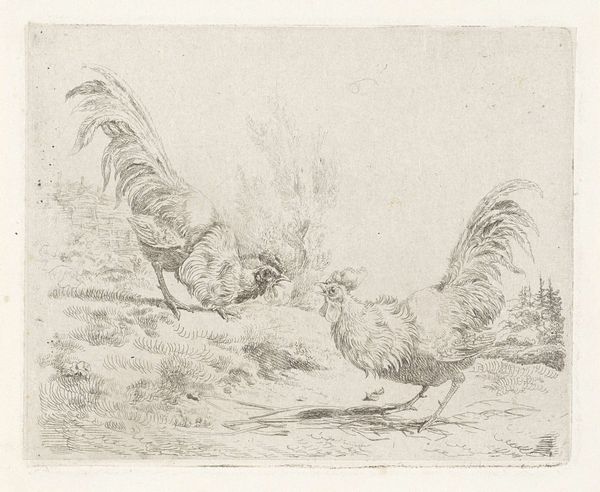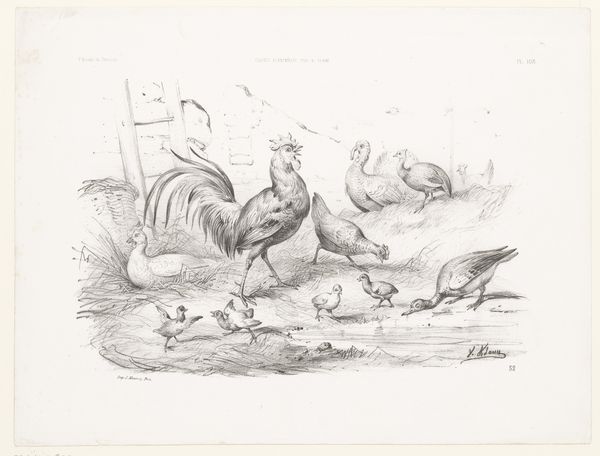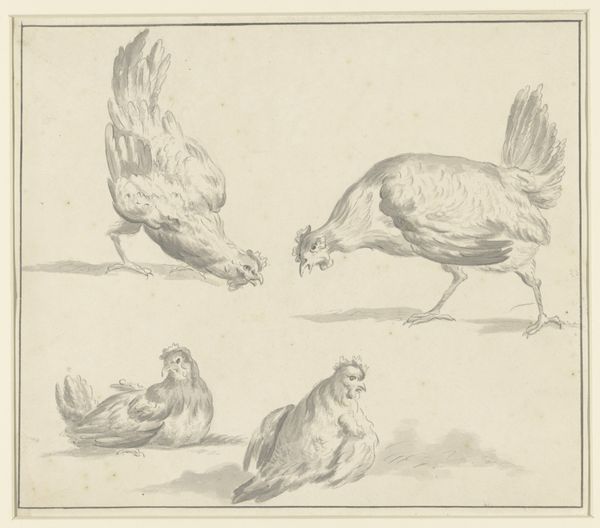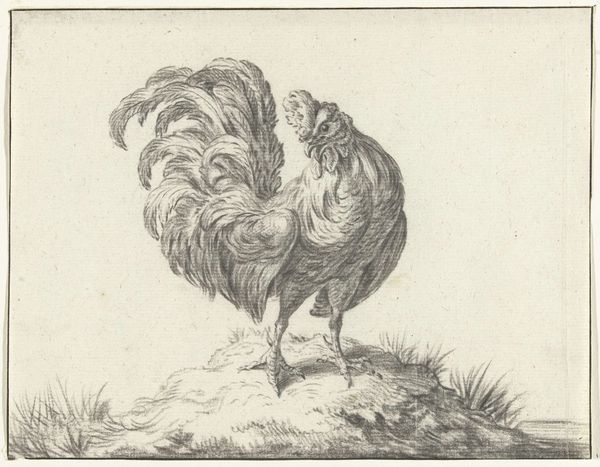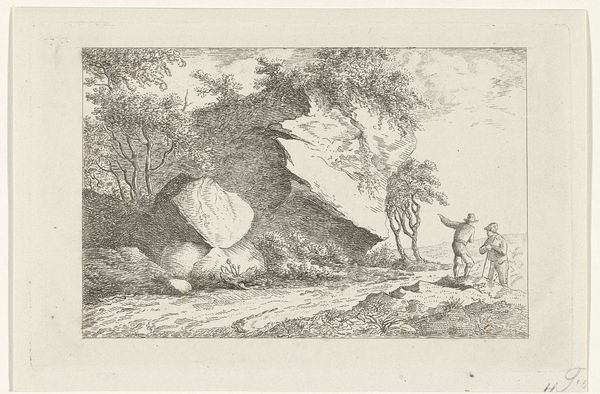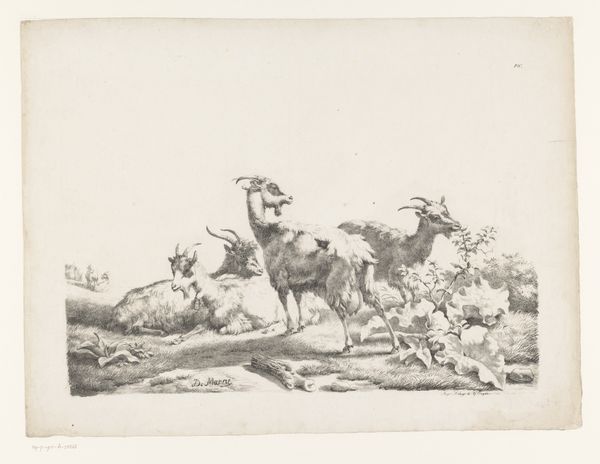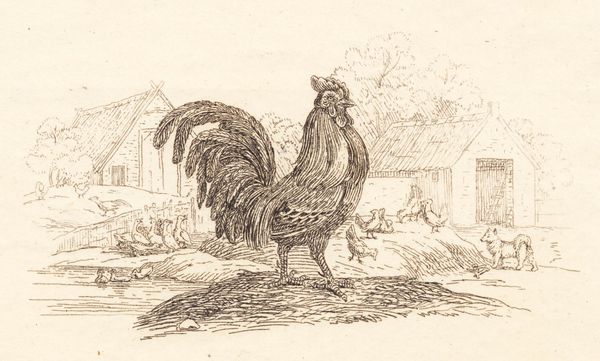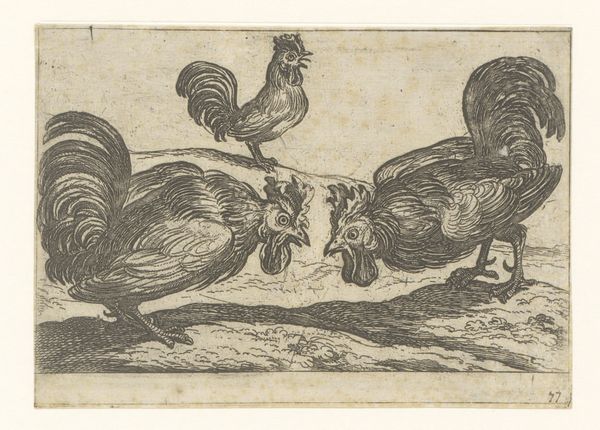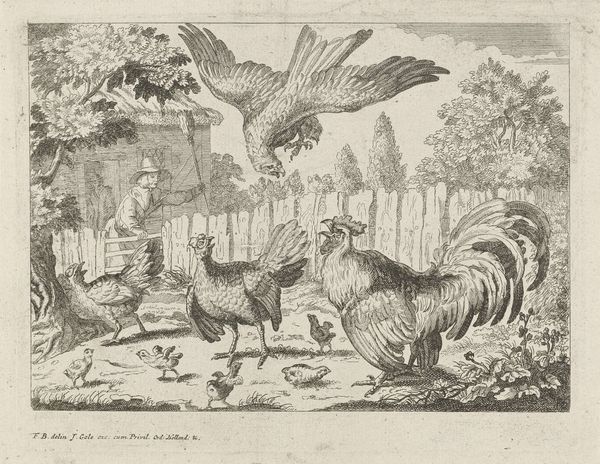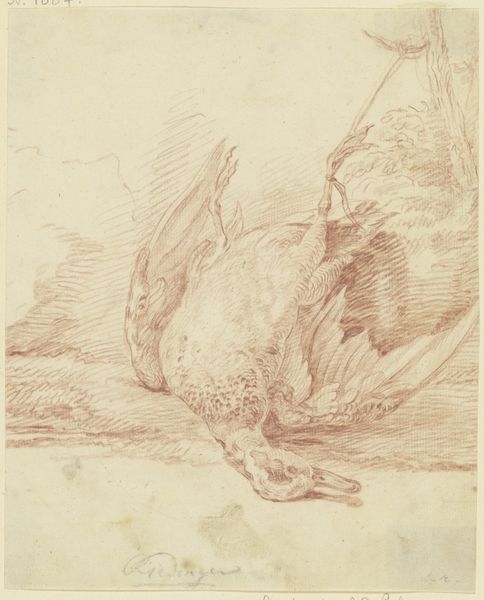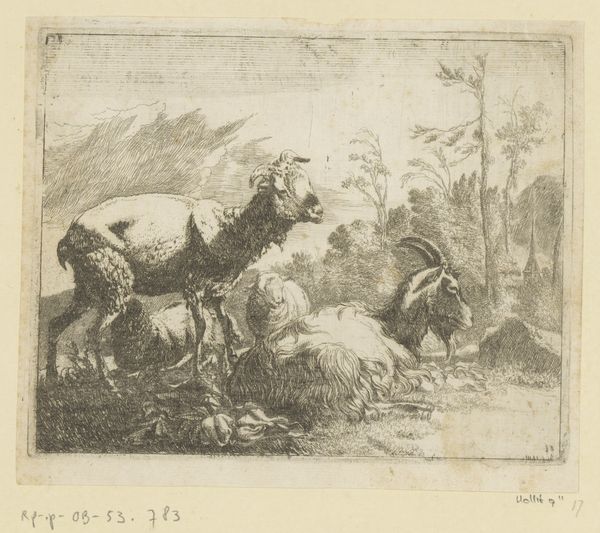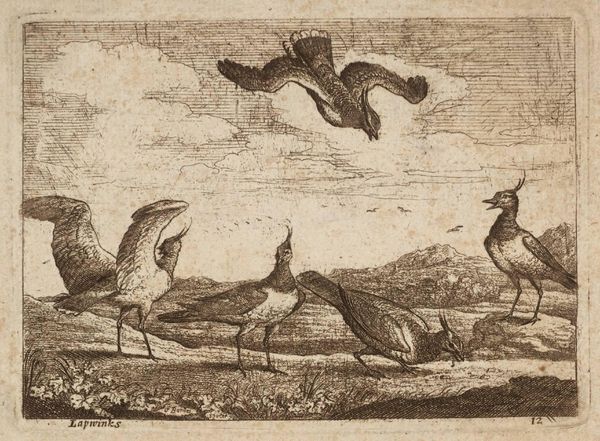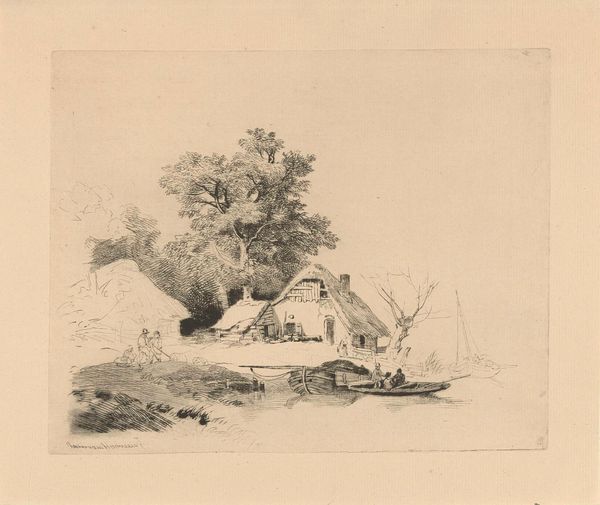
print, etching
#
animal
# print
#
etching
#
landscape
#
figuration
#
line
#
genre-painting
#
history-painting
#
realism
Dimensions: height 117 mm, width 144 mm
Copyright: Rijks Museum: Open Domain
Curator: Albertus Verhoesen created this print titled "Twee vechtende hanen", sometime between 1816 and 1881. It's currently held here at the Rijksmuseum. Editor: Immediately, the energy leaps out. Those fine, etched lines – they're practically vibrating with the tension between the two roosters! Such subtle gradations of tone, yet the postures are so expressive. Curator: The artist's chosen medium is fascinating: etching allows for these sharp lines that heighten the drama, giving voice to questions around gender, class, and violence as a social ill and commentary on patriarchal systems. Editor: Quite right. I see that sharpness as serving primarily the visual dynamism. Notice how Verhoesen masterfully uses the landscape, too. The ground plane feels almost tilted, intensifying the confrontation. The roosters almost seem precariously balanced as figures within the composition. Curator: But is the precarious balance within the art perhaps reflecting societal anxieties of that moment? A commentary on shifting social and economic power reflected in a microcosm of barnyard squabbles? Editor: Possibly. But equally persuasive to me is how the cross-hatching creates a complex visual texture which gives their plumage a tactile quality. It’s not just representational, it engages our senses directly! The work almost seems to ask, "what does tension FEEL like?” Curator: What I see is also Verhoesen positioning animal conflict as a reflection of human power dynamics, making an unmistakable argument about human behaviour. Can we ignore these implications? This challenges our view of what ‘genre painting’ can encompass. Editor: Fair point. But beyond that, there is a harmony of light and shadow that truly brings those birds to life and also shows the value and vitality in examining those dynamics closely through formalism. Curator: I see the conflict extending beyond mere rivalry—an allegorical debate on societal conflicts. These works remind us how historical circumstances continue to affect our understanding, challenging systems of power, and prompting important dialog on justice and inequity, as a reflection of human behaviors. Editor: And, I must add that while all this can be discussed within context, at its most core, it provides a masterclass in rendering form through line and tone. What an invigorating visual experience!
Comments
No comments
Be the first to comment and join the conversation on the ultimate creative platform.
